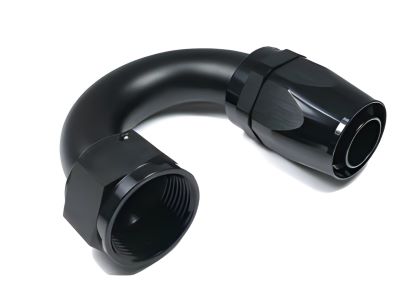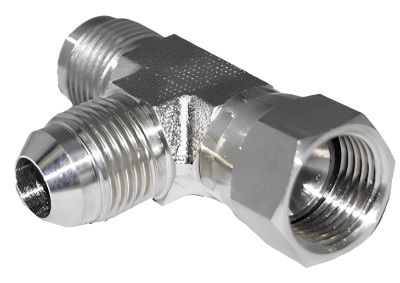Fluid fittings are the essential connectors that keep your system running smoothly. In the world of high-performance applications, two common standards reign supreme: AN (Army-Navy) and JIC (Joint Industry Council). While both deal with fluid flow, their connection methods differ.
This guide will equip you with the knowledge to navigate the world of AN to JIC connections.
Understanding AN and JIC Fittings
A. AN Fittings
AN fittings, born from military applications during World War II, are known for their tight tolerances and secure design. They feature a specific thread size (identified by a dash number, e.g., -6 AN) and rely on a machined sealing surface for a leak-proof connection. AN fittings are popular choices for high-performance automotive, racing, and aerospace applications.
B. JIC Fittings
JIC fittings, established by the Joint Industry Council, utilize a 37-degree flared connection. The male fitting has a tapered end, which seats against a matching angled surface in the female fitting. JIC fittings are known for their affordability and ease of use, making them popular in industrial machinery, hydraulic systems, and agricultural equipment.
Connecting AN to JIC: The Options
While tempting, directly connecting AN to JIC fittings is not recommended. The slight difference in tolerances can lead to leaks and compromise the integrity of your system. Here are two safe and effective methods to achieve an AN to JIC connection:
A. Using AN to JIC Adapters
These handy adapters are essentially one-stop solutions. They come in various configurations (male/female) and sizes, featuring an AN thread on one end and a JIC flare on the other. Simply screw the AN fitting onto the adapter and then connect the JIC end to your desired JIC component.
B. Using a Combination of Fittings
For more intricate connections, you can achieve AN to JIC using separate fittings. This method typically involves a nipple (male threads on both ends) and a swivel (allows for angular adjustment). The AN fitting screws onto the nipple, followed by the swivel, which then connects to the JIC component via its flared end.
Choosing the Right Option: Considerations
The best method for your specific situation depends on several factors:
1. Pressure requirements: Adapters are generally suitable for lower pressure systems. For high-pressure applications, the additional security of separate fittings might be preferable.
2. Available space: Adapters offer a more compact solution, while separate fittings can take up slightly more space due to the additional components.
3. Complexity of the connection: If your connection requires multiple directional changes, separate fittings with a swivel offer more flexibility.
4. Cost factors: Adapters are often a more cost-effective option compared to using multiple separate fittings.
Installation Tips and Safety Precautions
For both methods:
➡️ Ensure a clean and debris-free work area.
➡️ Use compatible thread sealant on appropriate connections.
➡️ Tighten all fittings to the recommended torque specifications (consult the manufacturer’s guide).
Safety First!
➡️ Always relieve pressure from the system before working on any connections.
➡️ Use appropriate tools and wrenches to avoid damaging the fittings.
➡️ Wear safety glasses and gloves to protect yourself from potential fluid sprays or leaks.
Frequently Asked Questions (FAQ)
Q: Can I use different materials for AN and JIC fittings in the same connection?
A: In most cases, yes. As long as the thread size and flare angle are compatible, you can use different materials (e.g., brass adapter with steel fittings) depending on your application’s needs and compatibility with the fluids being used.
Q: I’m experiencing leaks after connecting AN to JIC. What could be the problem?
A: Leaks can occur due to several reasons: improper tightening, damaged threads or flares, incompatible sealants, or using low-quality fittings. Double-check your installation process, inspect the components for damage, and ensure you’re using the correct sealant for your application. If leaks persist, consult a professional for further assistance.
Q: Why is it important to use high-quality fittings?
A: Fluid systems can be under immense pressure. High-quality fittings ensure proper strength, leak-proof connections, and system reliability. Opting for cheap, low-grade fittings can lead to catastrophic failures and potential safety hazards.
Conclusion
AN and JIC fittings, while serving similar purposes, require a thoughtful approach when connecting them. By understanding the options available, considering your specific needs, and prioritizing safety, you can achieve a leak-proof and reliable AN to JIC connection in your fluid system.
For more details on specific fitting sizes, pressure ratings, and recommended installation procedures, refer to the resources provided by reputable AN and JIC fitting manufacturers.
Post time: Jul-25-2024



